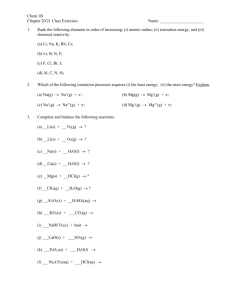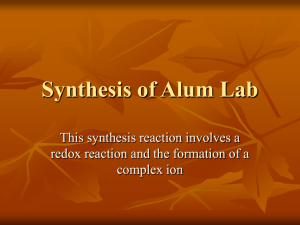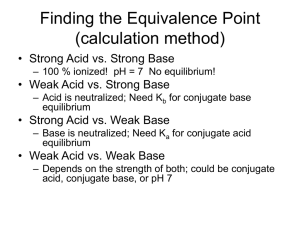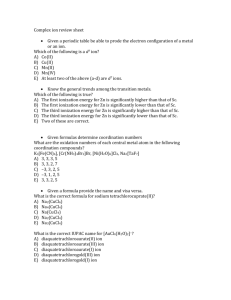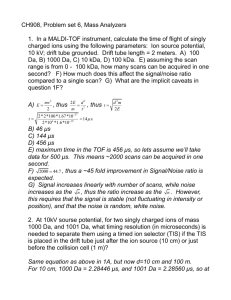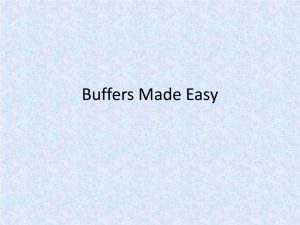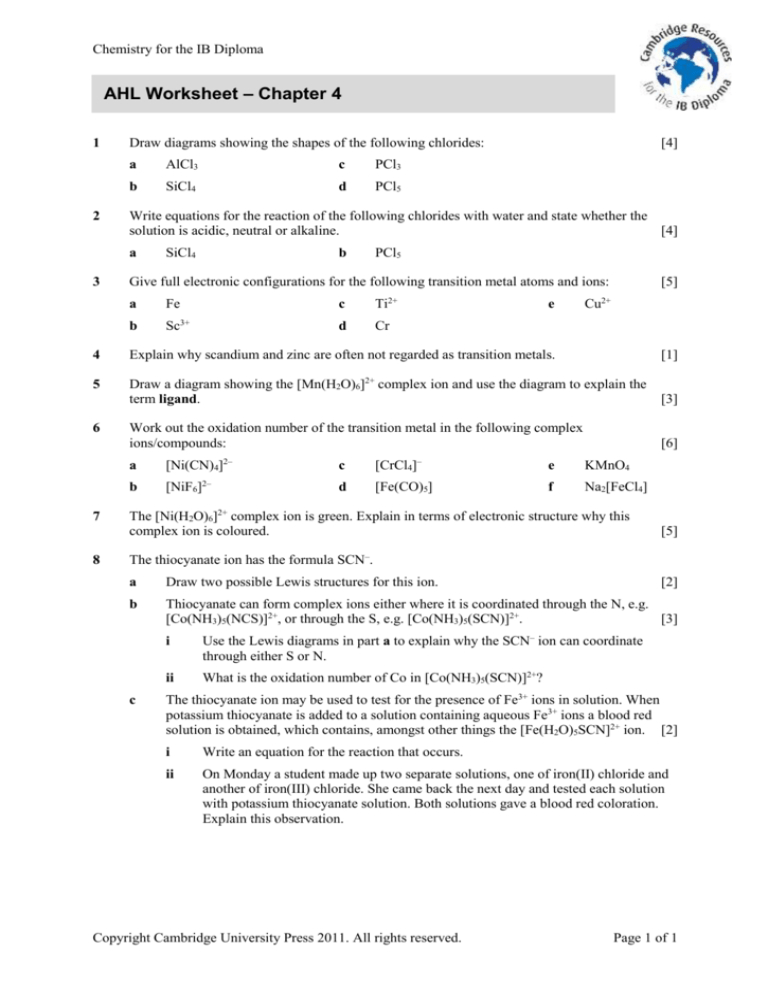
Chemistry for the IB Diploma
AHL Worksheet – Chapter 4
1
2
Draw diagrams showing the shapes of the following chlorides:
a
AlCl3
c
PCl3
b
SiCl4
d
PCl5
Write equations for the reaction of the following chlorides with water and state whether the
solution is acidic, neutral or alkaline.
[4]
a
3
[4]
SiCl4
b
PCl5
Give full electronic configurations for the following transition metal atoms and ions:
a
Fe
c
Ti2+
b
Sc3+
d
Cr
e
[5]
Cu2+
4
Explain why scandium and zinc are often not regarded as transition metals.
[1]
5
Draw a diagram showing the [Mn(H2O)6]2+ complex ion and use the diagram to explain the
term ligand.
[3]
Work out the oxidation number of the transition metal in the following complex
ions/compounds:
[6]
6
7
8
a
[Ni(CN)4]2–
c
[CrCl4]–
e
KMnO4
b
[NiF6]2–
d
[Fe(CO)5]
f
Na2[FeCl4]
The [Ni(H2O)6]2+ complex ion is green. Explain in terms of electronic structure why this
complex ion is coloured.
[5]
The thiocyanate ion has the formula SCN–.
a
Draw two possible Lewis structures for this ion.
b
Thiocyanate can form complex ions either where it is coordinated through the N, e.g.
[Co(NH3)5(NCS)]2+, or through the S, e.g. [Co(NH3)5(SCN)]2+.
[3]
c
[2]
i
Use the Lewis diagrams in part a to explain why the SCN– ion can coordinate
through either S or N.
ii
What is the oxidation number of Co in [Co(NH3)5(SCN)]2+?
The thiocyanate ion may be used to test for the presence of Fe3+ ions in solution. When
potassium thiocyanate is added to a solution containing aqueous Fe3+ ions a blood red
solution is obtained, which contains, amongst other things the [Fe(H2O)5SCN]2+ ion. [2]
i
Write an equation for the reaction that occurs.
ii
On Monday a student made up two separate solutions, one of iron(II) chloride and
another of iron(III) chloride. She came back the next day and tested each solution
with potassium thiocyanate solution. Both solutions gave a blood red coloration.
Explain this observation.
Copyright Cambridge University Press 2011. All rights reserved.
Page 1 of 1






